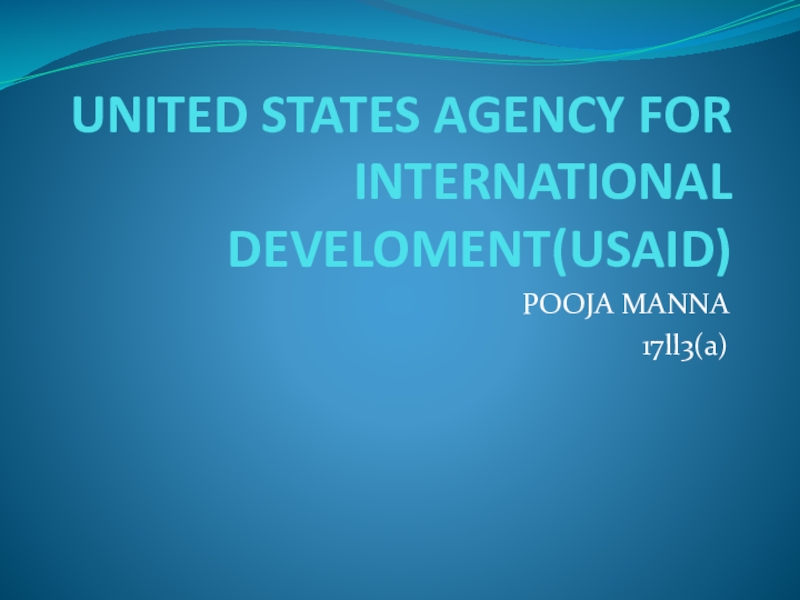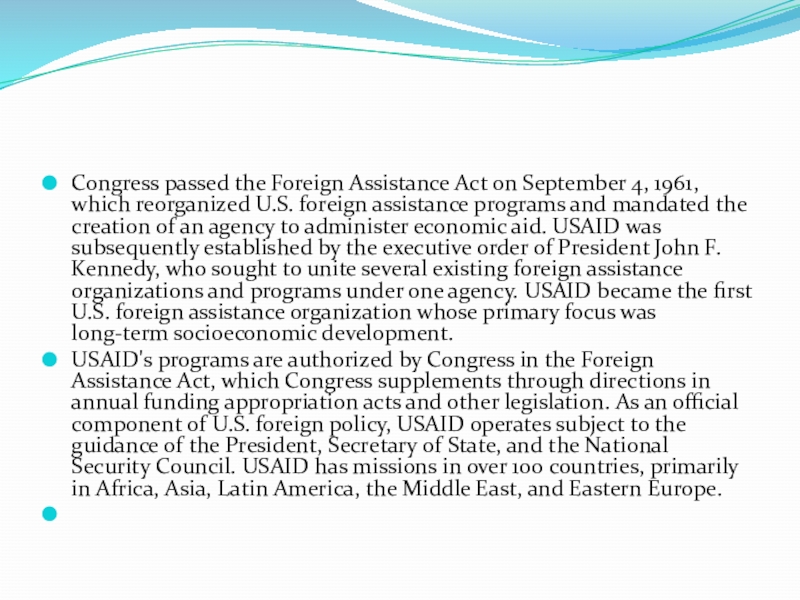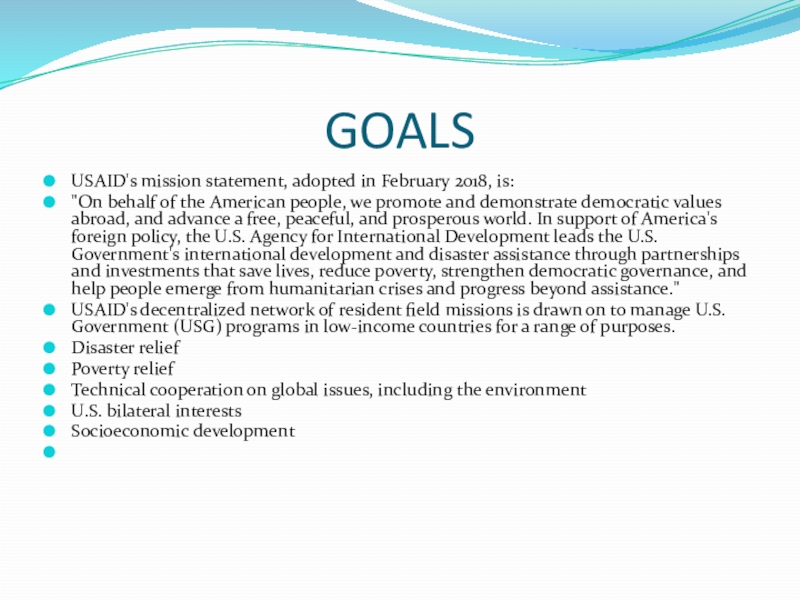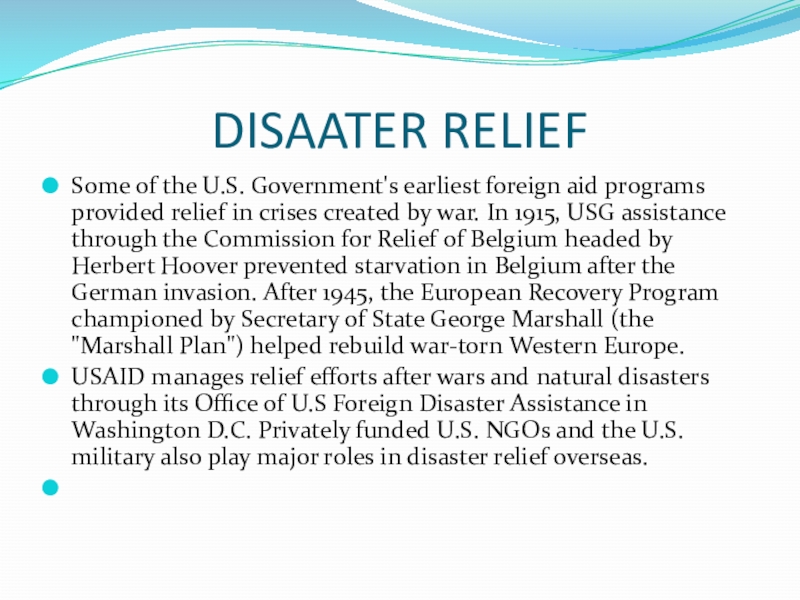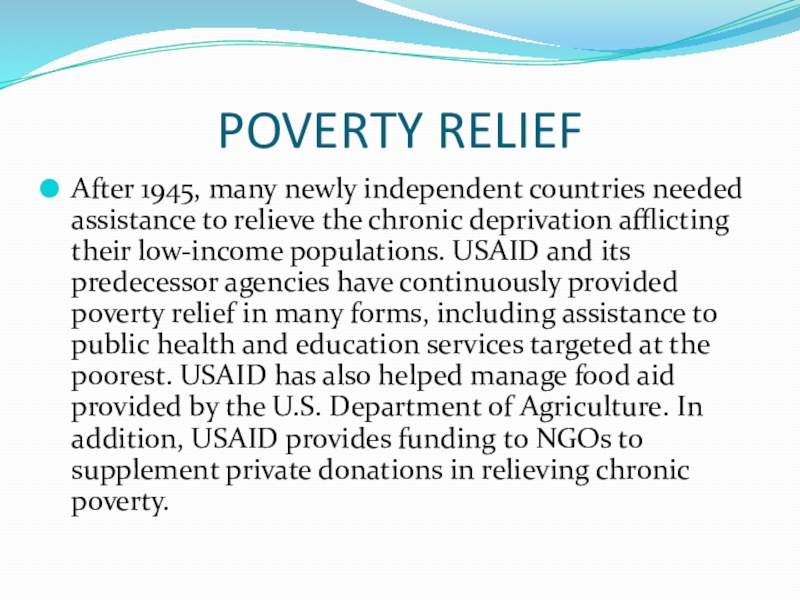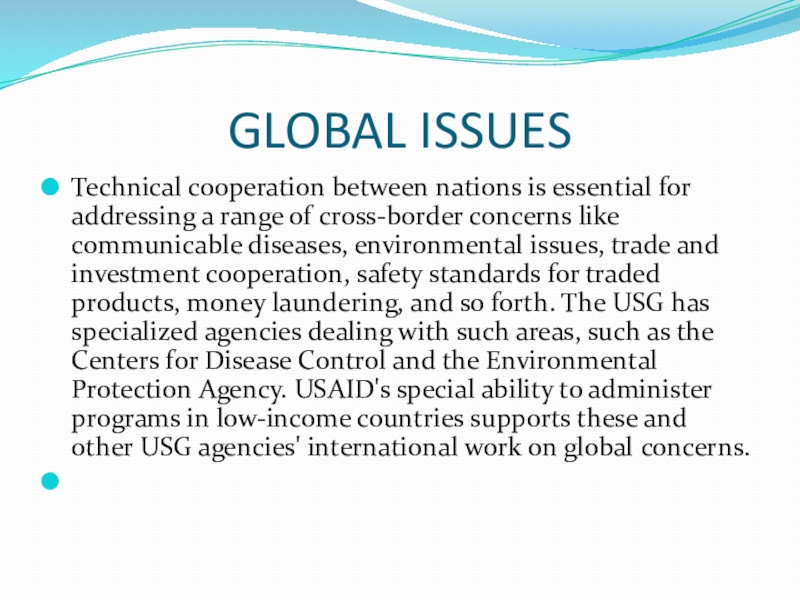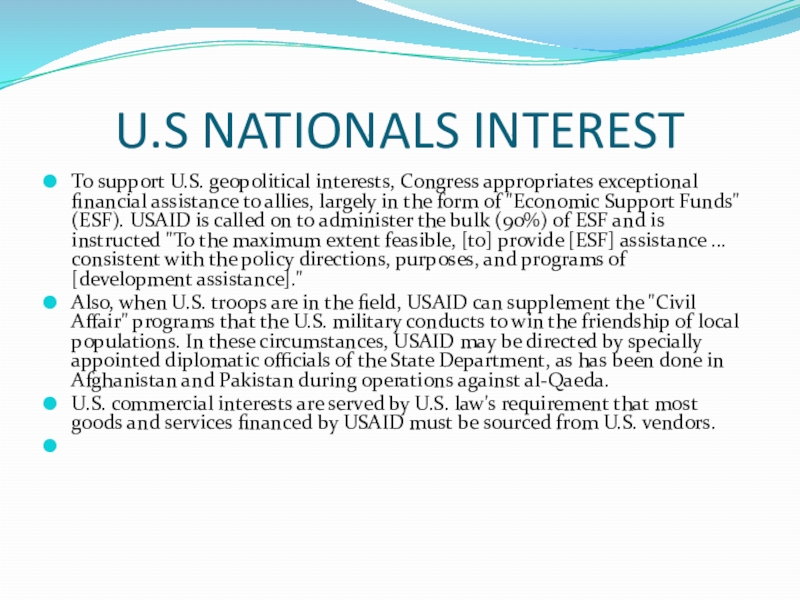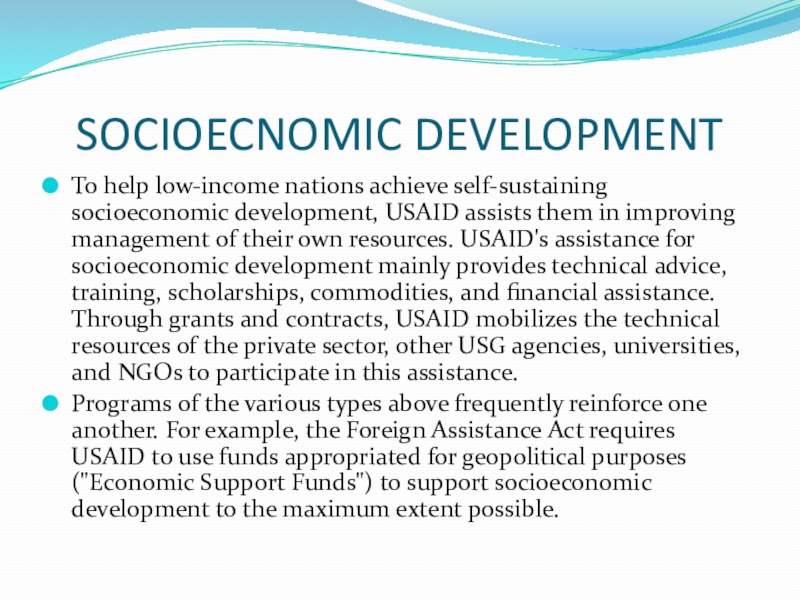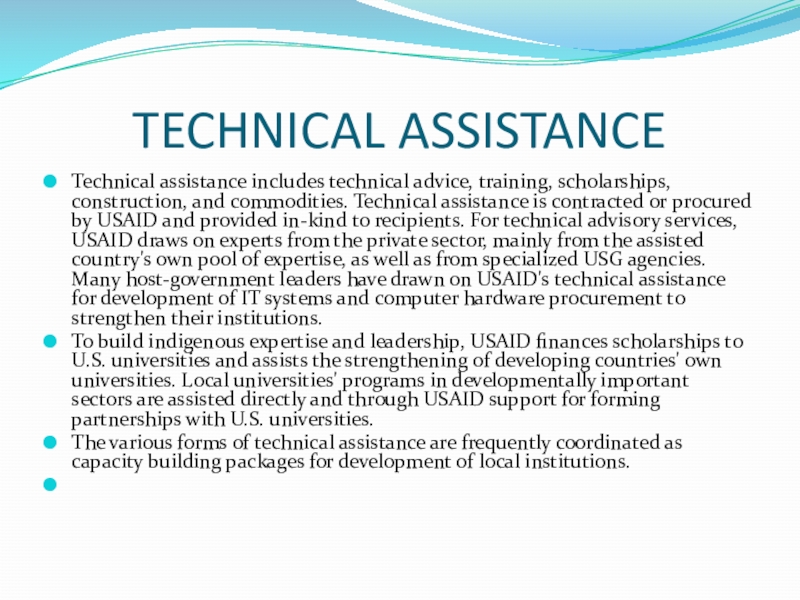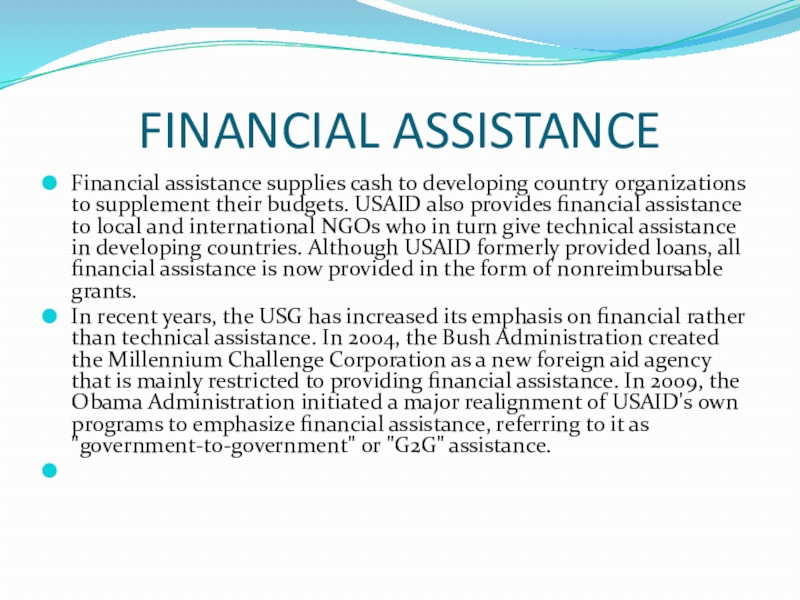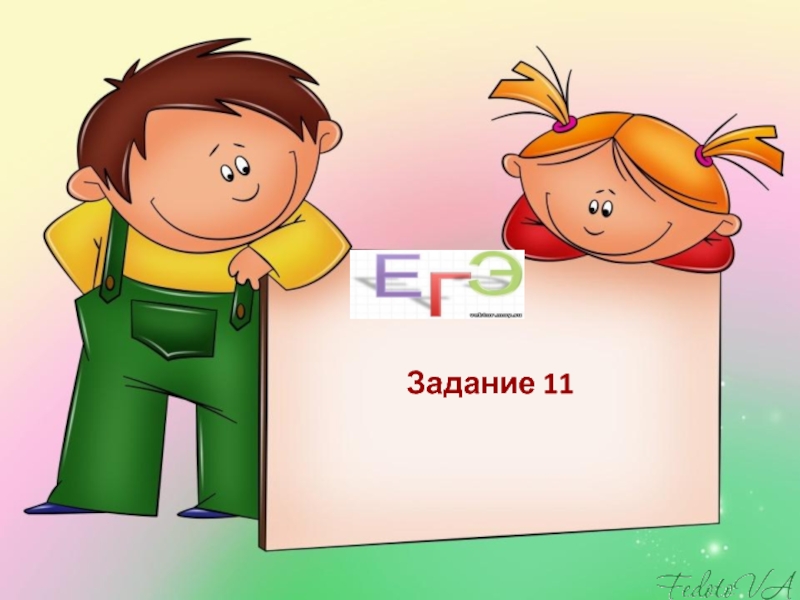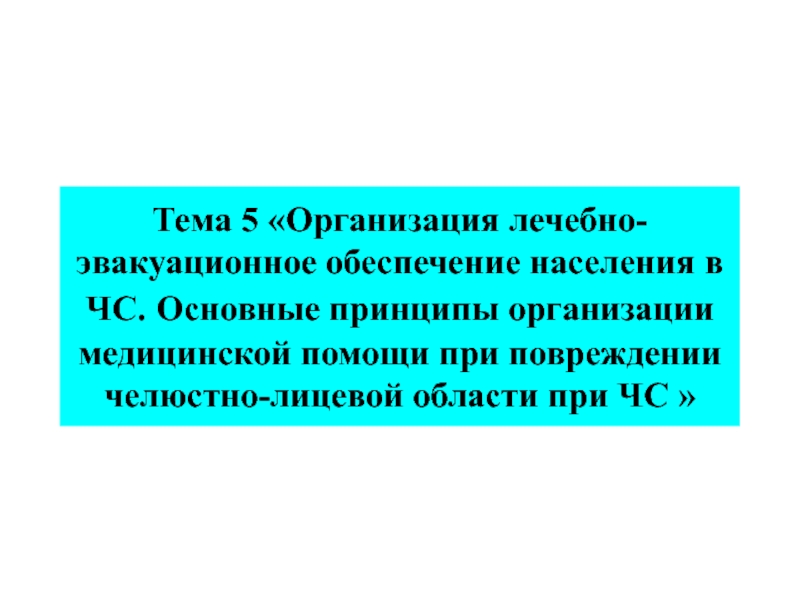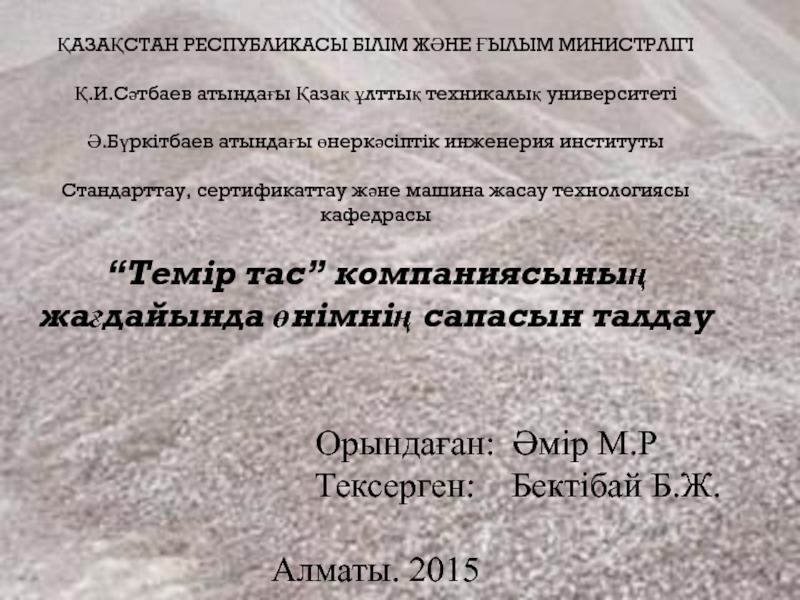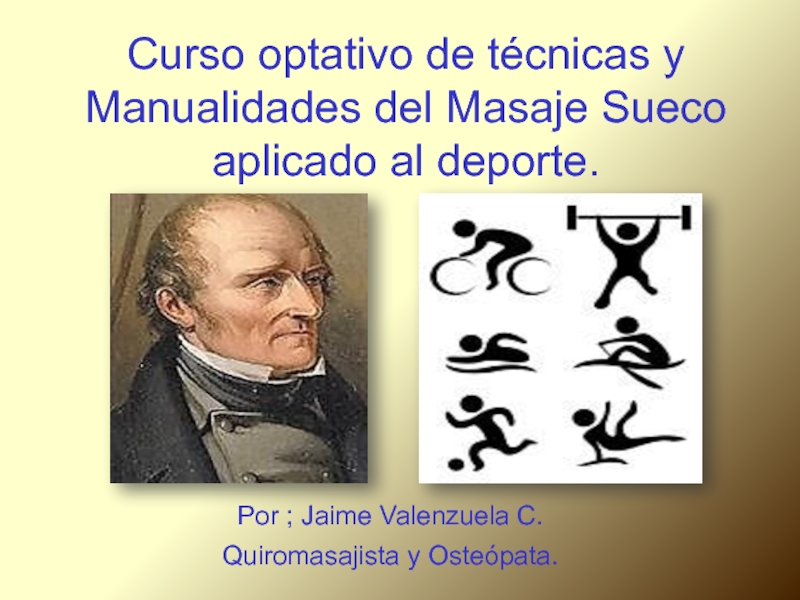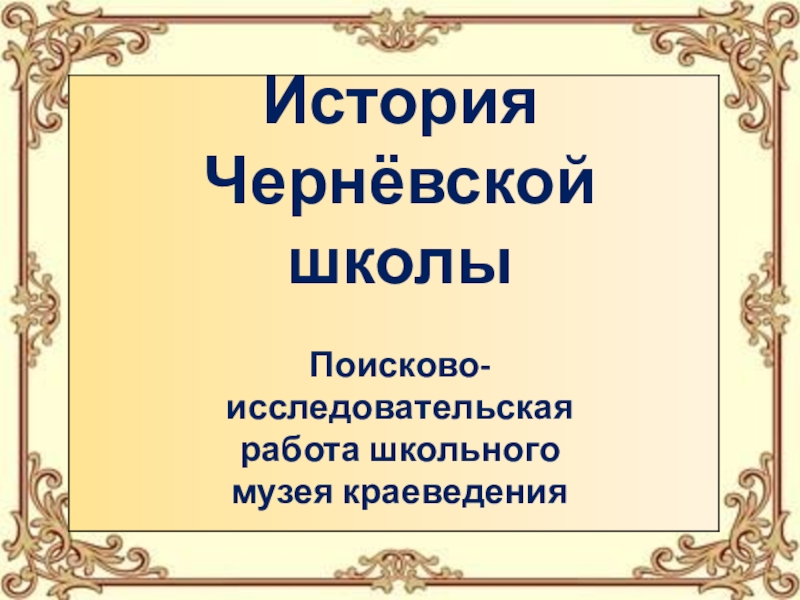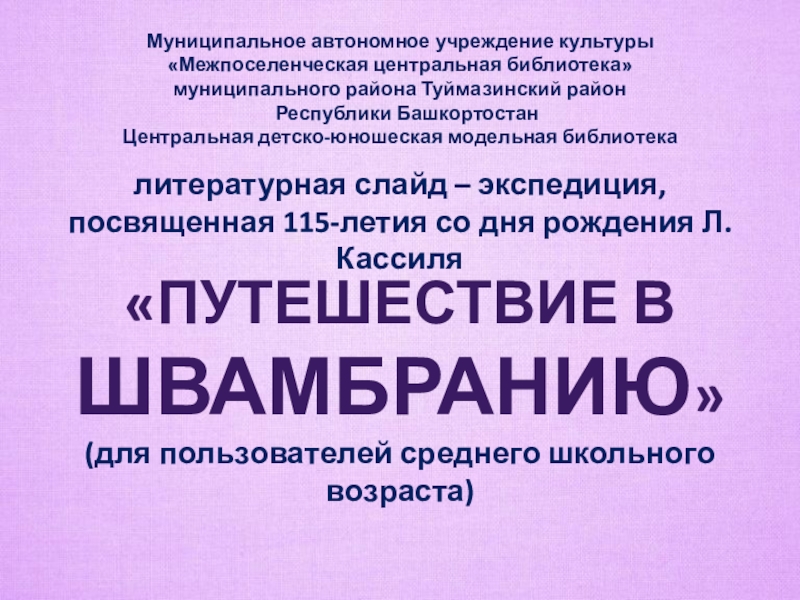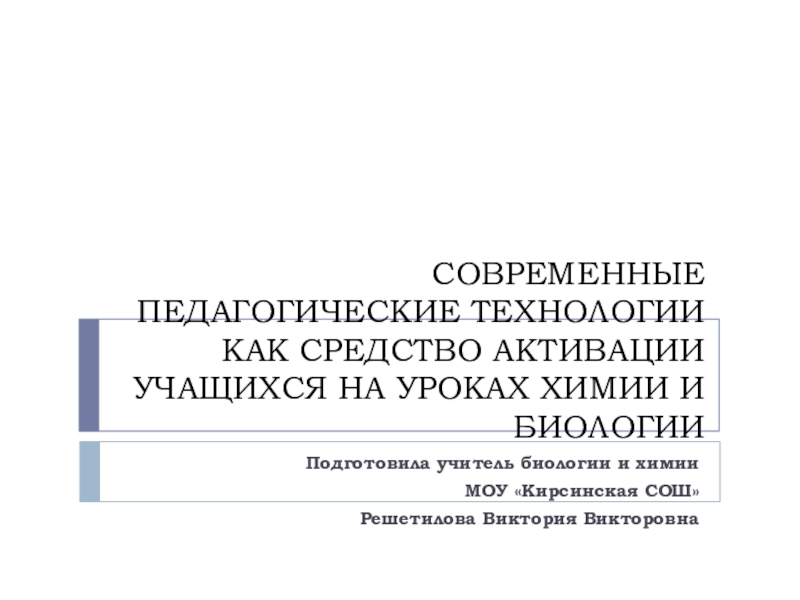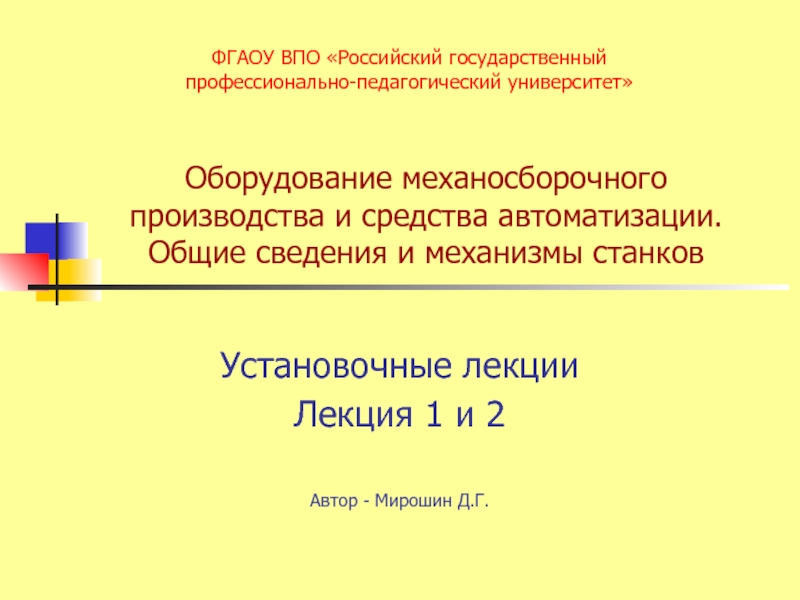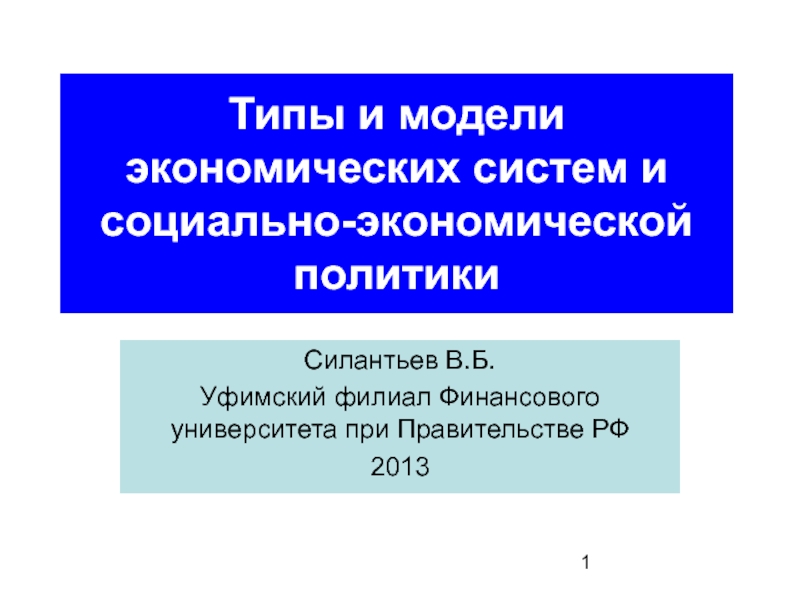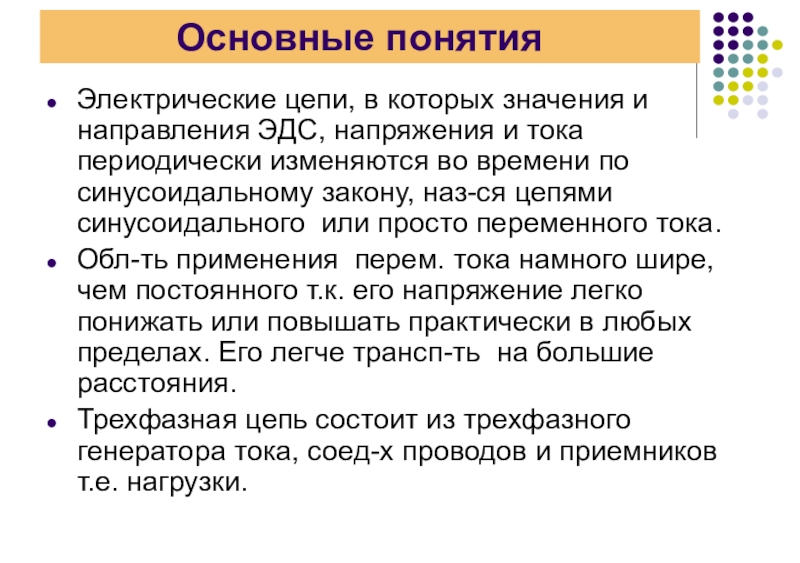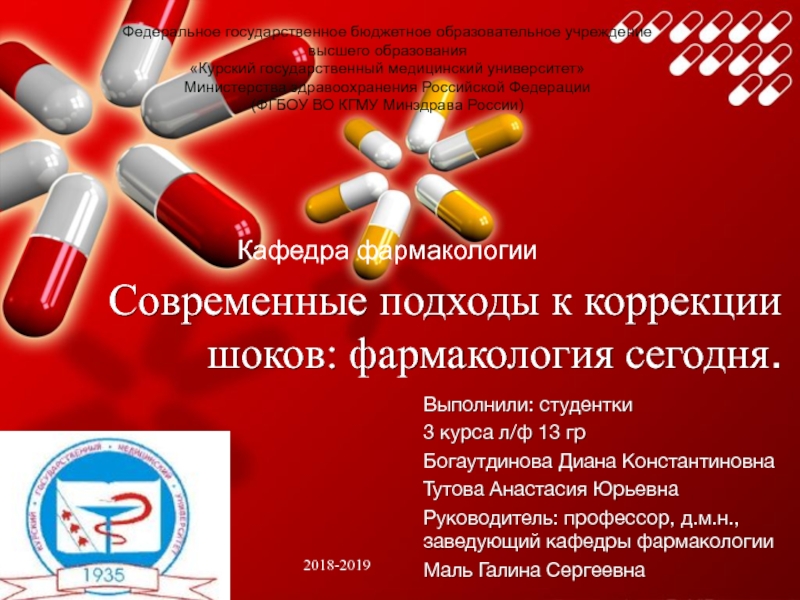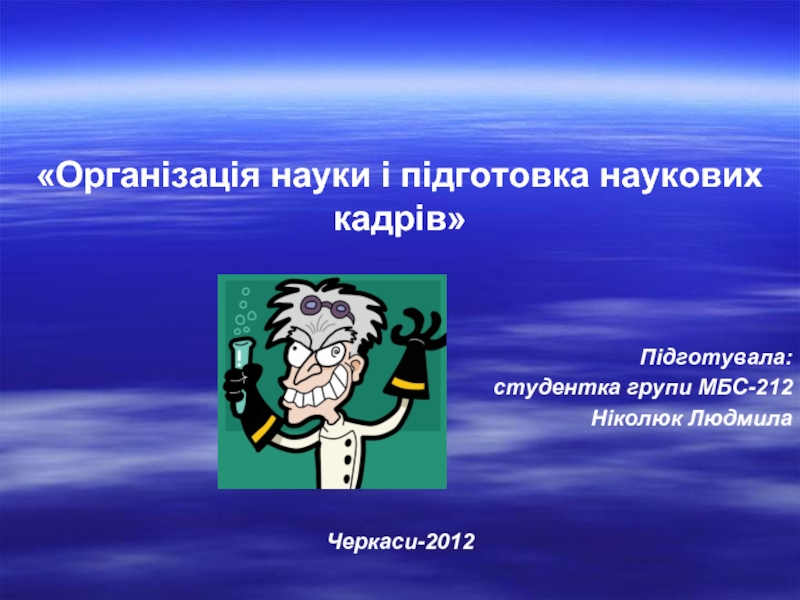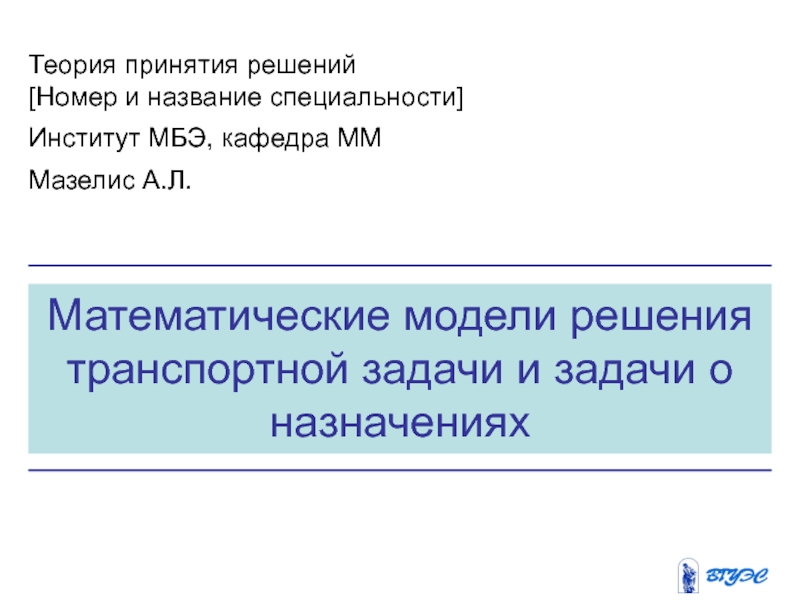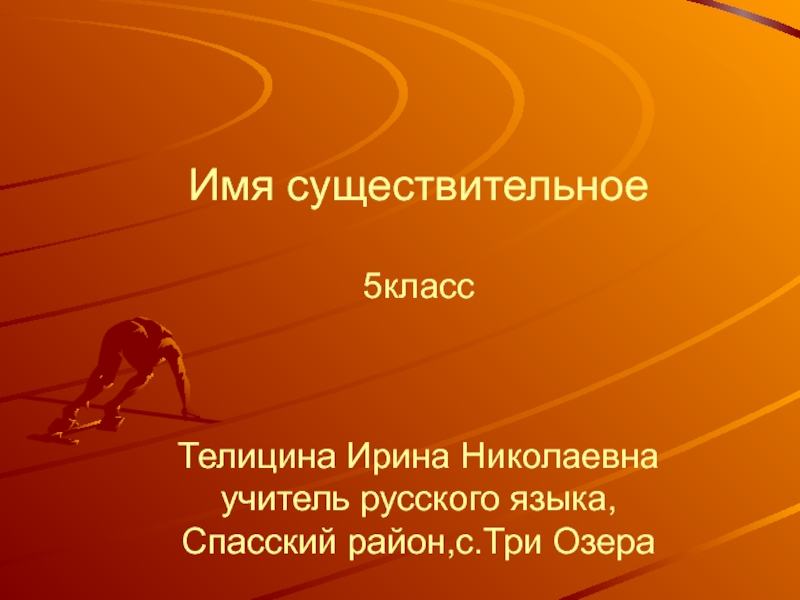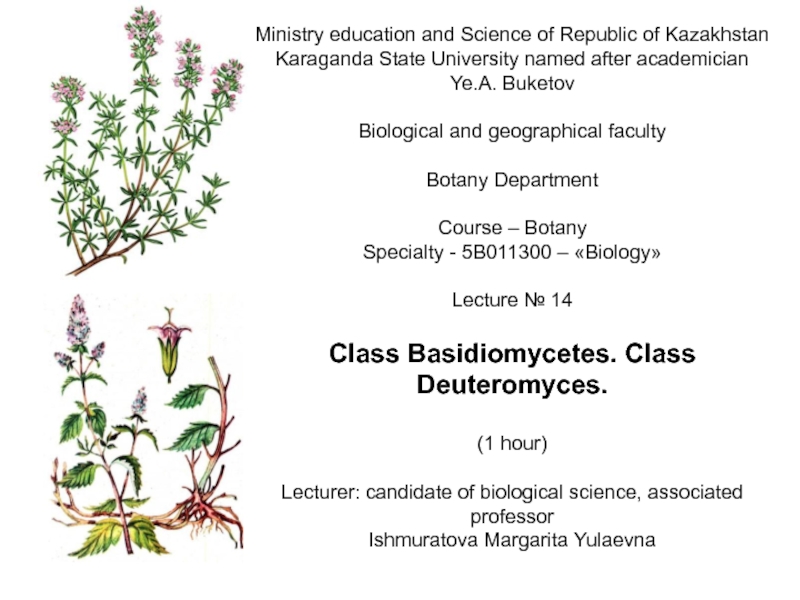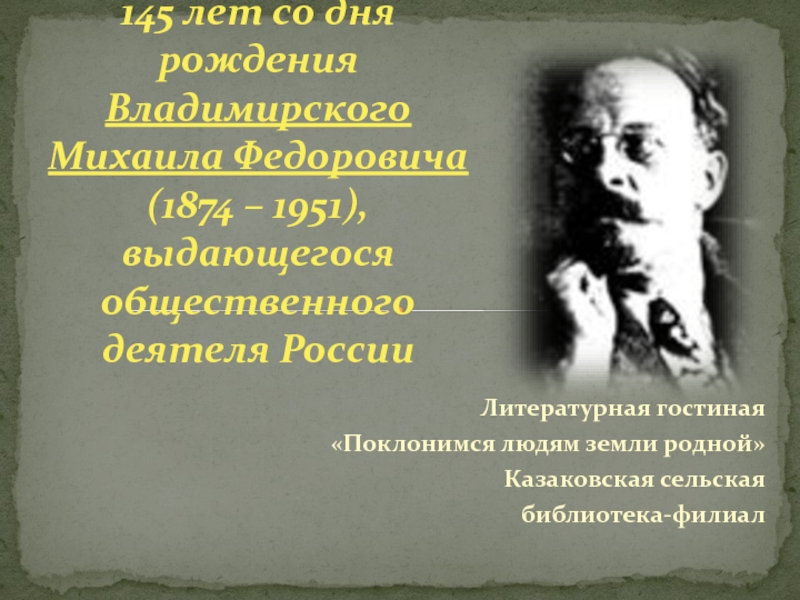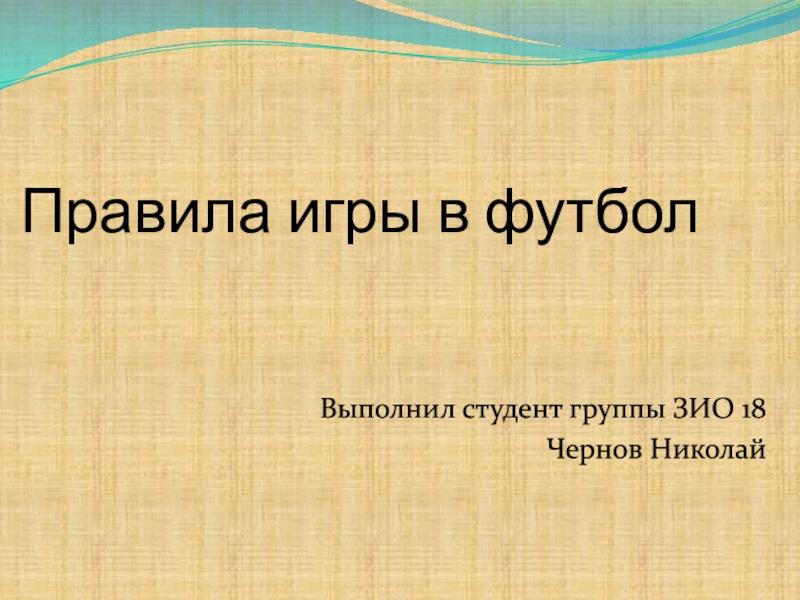Разделы презентаций
- Разное
- Английский язык
- Астрономия
- Алгебра
- Биология
- География
- Геометрия
- Детские презентации
- Информатика
- История
- Литература
- Математика
- Медицина
- Менеджмент
- Музыка
- МХК
- Немецкий язык
- ОБЖ
- Обществознание
- Окружающий мир
- Педагогика
- Русский язык
- Технология
- Физика
- Философия
- Химия
- Шаблоны, картинки для презентаций
- Экология
- Экономика
- Юриспруденция
UNITED STATES AGENCY FOR INTERNATIONAL DEVELOMENT(USAID)
Содержание
- 1. UNITED STATES AGENCY FOR INTERNATIONAL DEVELOMENT(USAID)
- 2. INTRODUCTIONThe United States Agency for International Development (USAID) is
- 3. Congress passed the Foreign Assistance Act on September 4,
- 4. GOALSUSAID's mission statement, adopted in February 2018,
- 5. DISAATER RELIEFSome of the U.S. Government's earliest
- 6. POVERTY RELIEFAfter 1945, many newly independent countries
- 7. GLOBAL ISSUESTechnical cooperation between nations is essential
- 8. ENVIRONMENTAmong these global interests, environmental issues attract
- 9. U.S NATIONALS INTERESTTo support U.S. geopolitical interests,
- 10. SOCIOECNOMIC DEVELOPMENTTo help low-income nations achieve self-sustaining
- 11. TECHNICAL ASSISTANCETechnical assistance includes technical advice, training,
- 12. FINANCIAL ASSISTANCEFinancial assistance supplies cash to developing
- 13. Скачать презентанцию
INTRODUCTIONThe United States Agency for International Development (USAID) is an independent agency of the United States federal government that is primarily responsible for administering civilian foreign aid and development assistance. With a budget of over $27 billion, USAID is one
Слайды и текст этой презентации
Слайд 2INTRODUCTION
The United States Agency for International Development (USAID) is an independent agency of the United
Слайд 3Congress passed the Foreign Assistance Act on September 4, 1961, which reorganized
U.S. foreign assistance programs and mandated the creation of an
agency to administer economic aid. USAID was subsequently established by the executive order of President John F. Kennedy, who sought to unite several existing foreign assistance organizations and programs under one agency. USAID became the first U.S. foreign assistance organization whose primary focus was long-term socioeconomic development.USAID's programs are authorized by Congress in the Foreign Assistance Act, which Congress supplements through directions in annual funding appropriation acts and other legislation. As an official component of U.S. foreign policy, USAID operates subject to the guidance of the President, Secretary of State, and the National Security Council. USAID has missions in over 100 countries, primarily in Africa, Asia, Latin America, the Middle East, and Eastern Europe.
Слайд 4GOALS
USAID's mission statement, adopted in February 2018, is:
"On behalf of
the American people, we promote and demonstrate democratic values abroad,
and advance a free, peaceful, and prosperous world. In support of America's foreign policy, the U.S. Agency for International Development leads the U.S. Government's international development and disaster assistance through partnerships and investments that save lives, reduce poverty, strengthen democratic governance, and help people emerge from humanitarian crises and progress beyond assistance."USAID's decentralized network of resident field missions is drawn on to manage U.S. Government (USG) programs in low-income countries for a range of purposes.
Disaster relief
Poverty relief
Technical cooperation on global issues, including the environment
U.S. bilateral interests
Socioeconomic development
Слайд 5DISAATER RELIEF
Some of the U.S. Government's earliest foreign aid programs
provided relief in crises created by war. In 1915, USG
assistance through the Commission for Relief of Belgium headed by Herbert Hoover prevented starvation in Belgium after the German invasion. After 1945, the European Recovery Program championed by Secretary of State George Marshall (the "Marshall Plan") helped rebuild war-torn Western Europe.USAID manages relief efforts after wars and natural disasters through its Office of U.S Foreign Disaster Assistance in Washington D.C. Privately funded U.S. NGOs and the U.S. military also play major roles in disaster relief overseas.
Слайд 6POVERTY RELIEF
After 1945, many newly independent countries needed assistance to
relieve the chronic deprivation afflicting their low-income populations. USAID and
its predecessor agencies have continuously provided poverty relief in many forms, including assistance to public health and education services targeted at the poorest. USAID has also helped manage food aid provided by the U.S. Department of Agriculture. In addition, USAID provides funding to NGOs to supplement private donations in relieving chronic poverty.Слайд 7GLOBAL ISSUES
Technical cooperation between nations is essential for addressing a
range of cross-border concerns like communicable diseases, environmental issues, trade
and investment cooperation, safety standards for traded products, money laundering, and so forth. The USG has specialized agencies dealing with such areas, such as the Centers for Disease Control and the Environmental Protection Agency. USAID's special ability to administer programs in low-income countries supports these and other USG agencies' international work on global concerns.Слайд 8ENVIRONMENT
Among these global interests, environmental issues attract high attention. USAID
assists projects that conserve and protect threatened land, water, forests,
and wildlife. USAID also assists projects to reduce greenhouse-gas emissions and to build resilience to the risks associated with global climate change. U.S. environmental regulation laws require that programs sponsored by USAID should be both economically and environmentally sustainable.Слайд 9U.S NATIONALS INTEREST
To support U.S. geopolitical interests, Congress appropriates exceptional
financial assistance to allies, largely in the form of "Economic
Support Funds" (ESF). USAID is called on to administer the bulk (90%) of ESF and is instructed "To the maximum extent feasible, [to] provide [ESF] assistance ... consistent with the policy directions, purposes, and programs of [development assistance]."Also, when U.S. troops are in the field, USAID can supplement the "Civil Affair" programs that the U.S. military conducts to win the friendship of local populations. In these circumstances, USAID may be directed by specially appointed diplomatic officials of the State Department, as has been done in Afghanistan and Pakistan during operations against al-Qaeda.
U.S. commercial interests are served by U.S. law's requirement that most goods and services financed by USAID must be sourced from U.S. vendors.
Слайд 10SOCIOECNOMIC DEVELOPMENT
To help low-income nations achieve self-sustaining socioeconomic development, USAID
assists them in improving management of their own resources. USAID's
assistance for socioeconomic development mainly provides technical advice, training, scholarships, commodities, and financial assistance. Through grants and contracts, USAID mobilizes the technical resources of the private sector, other USG agencies, universities, and NGOs to participate in this assistance.Programs of the various types above frequently reinforce one another. For example, the Foreign Assistance Act requires USAID to use funds appropriated for geopolitical purposes ("Economic Support Funds") to support socioeconomic development to the maximum extent possible.
Слайд 11TECHNICAL ASSISTANCE
Technical assistance includes technical advice, training, scholarships, construction, and
commodities. Technical assistance is contracted or procured by USAID and
provided in-kind to recipients. For technical advisory services, USAID draws on experts from the private sector, mainly from the assisted country's own pool of expertise, as well as from specialized USG agencies. Many host-government leaders have drawn on USAID's technical assistance for development of IT systems and computer hardware procurement to strengthen their institutions.To build indigenous expertise and leadership, USAID finances scholarships to U.S. universities and assists the strengthening of developing countries' own universities. Local universities' programs in developmentally important sectors are assisted directly and through USAID support for forming partnerships with U.S. universities.
The various forms of technical assistance are frequently coordinated as capacity building packages for development of local institutions.
Слайд 12FINANCIAL ASSISTANCE
Financial assistance supplies cash to developing country organizations to
supplement their budgets. USAID also provides financial assistance to local
and international NGOs who in turn give technical assistance in developing countries. Although USAID formerly provided loans, all financial assistance is now provided in the form of nonreimbursable grants.In recent years, the USG has increased its emphasis on financial rather than technical assistance. In 2004, the Bush Administration created the Millennium Challenge Corporation as a new foreign aid agency that is mainly restricted to providing financial assistance. In 2009, the Obama Administration initiated a major realignment of USAID's own programs to emphasize financial assistance, referring to it as "government-to-government" or "G2G" assistance.
